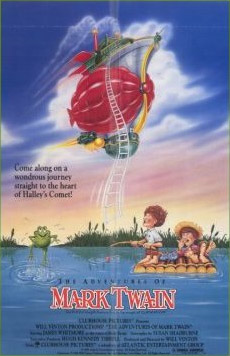The quirky inventor and his trusty four-legged pal are dragged into a rematch
After a brief scare that apparently threatened the end of the business of Aardman Animation, the claymation studio is back with a bang: the treacherous penguin who tormented the adorkable duo Wallace and Gromit in the 1993 episode The Wrong Trousers is now the main villain of his own feature-length film, Vengeance Most Fowl, streaming now on Netflix. (Hmm, a forgotten enemy from an old episode returns in a film? And it happens to be the second film in the franchise? Yes, the pattern is clear. Vengeance Most Fowl is the Wrath of Khan of the Wallace & Gromit universe.)
The setting where our clay heroes live appears to remain frozen in its vaguely mid-20th-century state, but as an embodiment of the eccentric inventor archetype, Wallace got a big update for the 2020s. The central joke about Wallace, the recurring flaw that reveals his character, has always been that he expends more effort in building an absurdly complicated machine that washes, dresses and feeds him than he'd expend in actually washing, dressing and feeding himself. So he presents a useful case scenario for our ongoing discussion about the tasks that people ought to be doing but prefer to delegate to machines.
This time, long-suffering Gromit's cause for consternation du jour is Wallace's invention of programmable garden gnomes. Whereas Gromit keeps a colorful garden that vibrates with life, the robotic gnome turns it into a geometrically perfect nightmare of topiary sameness. The message isn't subtle or original, but our era needs to be reminded of it: automation and standardization are extremely useful for saving time, but they cannot replace the pleasure of deliberate creative choices. As you may recall, one of Gromit's hobbies is knitting. He may take a whole day to finish one sock, while the robotic gnome spits out an entire suit in seconds, which is the opposite of what making your own clothes is about. Results-oriented methods are a bad fit for tasks where having to do an effort is the whole point. (At the meta level, this is an effective argument for the worth of claymation in a world of digital magic.) To stress the same point, the plot has Wallace introduce still another redundant machine: one that pets his dog for him. One would think people don't need to be reminded that interpersonal connection cannot be replaced with machines, but... alas. Such are the times allotted to us.
However, the film doesn't just tell us what we already know. There are more sides to the issue of dangerous machines. When the evil penguin once again hijacks Wallace's invention to turn it against him, the way Wallace wins is by making another machine. That's who he is; that's how he solves all his problems. Even Gromit learns to love the garden gnomes when they help save the day. What's going on?
To understand what Vengeance Most Fowl seems to be saying, it's worthwhile to look more closely at the subplot with the police officers who are trying to recapture the escaped penguin. In a nutshell, we have an experienced senior who has accumulated a vast repertoire of time-tested heuristics (which he calls trusting one's gut) and an enthusiastic rookie who has the textbook fresh in her head and prefers to solve cases by sticking to procedure. Their disagreement mirrors the film's core conflict between spontaneity and algorithm. And yet, it's the rookie cop who figures out the truth by insisting on following the logical rules of evidence (despite her superior believing she listened to her gut). Again: what's going on?
What I suspect is going on is that the opposition between spontaneity and algorithm doesn't need to be resolved, but dissolved. It was never a real opposition. The two need not be enemies. You can pet your dog by yourself while a robotic gnome assists you with the form of gardening you prefer.
This embrace between passion and technique is visible in the very fact that this film exists. Aardman is known for its very high standards of animation quality with immensely complicated materials. One could use computers to animate Wallace & Gromit in a fraction of the time, but the studio's choice to go for the painstaking effort it takes to make inert clay come alive, and make it look no less eye-catching than today's ubiquitous digital creations, is a beautiful demonstration that the medium is the message. Vengeance Most Fowl excels in overcoming unthinkable technical challenges: a dozen tiny gnomes walking in perfect synchrony to carry a van; a boat chase on a navigable aqueduct; an arsenal of boomeranging boots (it makes sense in context).
And then there is, of course, the brilliant choice to give the villain a malleable face that nonetheless stays expressionless no matter what. It's terrifying how we can always tell when he's angry, when he's content, when he's disappointed, when he's defiant, even though his face doesn't move even once. This is a welcome comeback for one of the best characters ever created by Aardman Animation.
Nerd Coefficient: 8/10.
POSTED BY: Arturo Serrano, multiclass Trekkie/Whovian/Moonie/Miraculer, accumulating experience points for still more obsessions.








